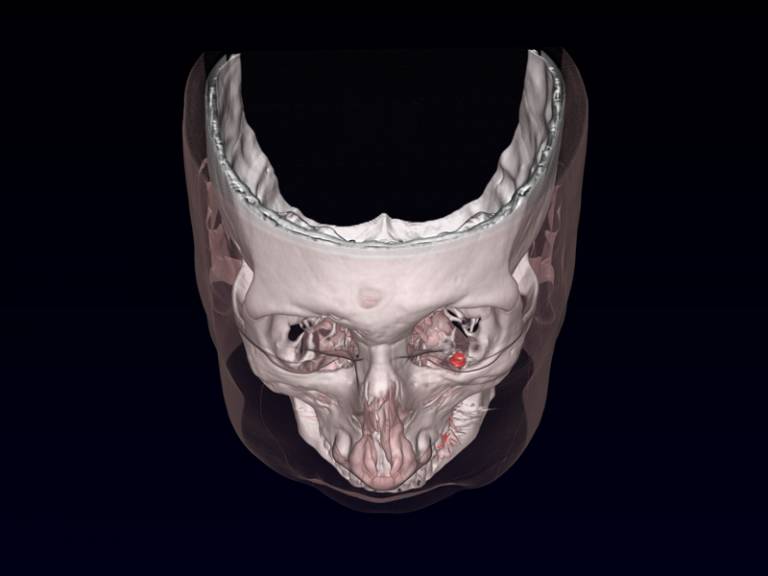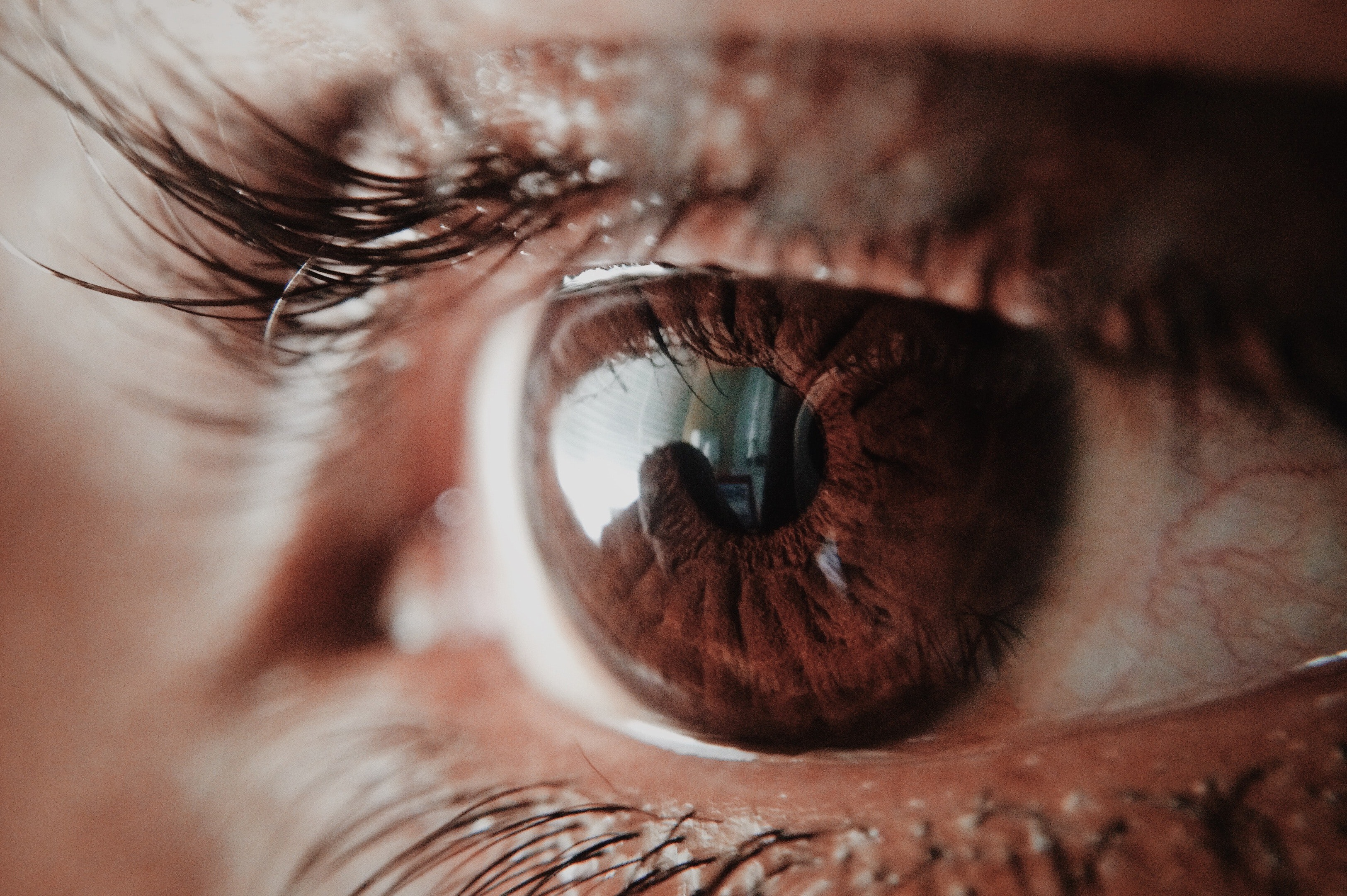创新背景
眼球震颤涉及到有节奏的振荡,或眼睛的闪烁,有时被称为“舞动的眼睛”它常常导致视盲,即对视野持续运动的感觉。这种情况影响了近400人中的1人,可能会导致内在致残,并导致视力下降。
创新过程
该案例研究发表在《眼科学》上,由UCL和牛津大学学者领导,描述了在一名眼震患者的每只眼睛下方的眼窝中植入一组新开发的磁铁。
由于霍奇金淋巴瘤,接受手术的患者在40多岁时出现了无法接受常规治疗的眼震,这对他的生活造成了很大影响,包括失去工作。他的困难促使研究小组对动眼神经假体的使用进行了研究,这种假体以前在理论上已经描述过,但在实践中没有得到证实。

研究小组开发了一种假体,其中一块磁铁植入眼眶底部(眼窝底部的骨头),与一块较小的磁铁相互作用,该磁铁缝合在控制眼球运动的眼外肌肉上。磁体包在钛中,可以安全地嵌入内部,因此能够在不造成任何损坏的情况下施加磁力。幸运的是,用于自发眼球运动的力大于引起闪烁运动的力,因此只需要非常小的磁铁就能最大限度地降低了眼睛静止的风险。
植入前,将磁铁连接到定制的隐形眼镜上进行测试。在证明成功后,Moorfields眼科医院的Geoff Rose教授和David Verity先生将磁性假体分两次植入,每只眼睛一次。患者从两次手术中很快恢复,并报告说,尽管他有一定程度的复视,但视盲有所改善,这是他在眼球震颤之前出现的症状。

测试表明,他的整体视力得到了大幅提高,并且对他的运动功能范围没有负面影响。在四年的随访报告中,该患者的症状保持稳定,他成功地恢复了有薪工作,并报告了阅读和看电视等日常活动的显著改善。
研究人员提醒说,他们的假体不会对所有眼球震颤患者都有效,因为磁性植入物不适合需要常规MRI扫描的患者,需要进一步研究,以了解假体对哪些患者最有帮助。
创新价值
这是首次成功使用动眼神经假体或控制眼球运动的植入物,该研究开辟了一个使用磁性植入物优化身体部位运动的新领域。
创新关键点
研究小组开发了一种假体,其中一块磁铁植入眼眶底部(眼窝底部的骨头),与一块较小的磁铁相互作用,该磁铁缝合在控制眼球运动的眼外肌肉上。磁体包在钛中,可以安全地嵌入内部,因此能够在不造成任何损坏的情况下施加磁力。
The newly developed magnet can be implanted into the eye to treat nystagmus
This case study, published in ophthalmology and led by UCL and Oxford University Scholars, describes the implantation of a newly developed magnet in the eye socket under each eye of an nystagmus patient.
Due to Hodgkin's lymphoma, the patient undergoing surgery developed nystagmus in his 40s that could not be treated conventionally, which had a great impact on his life, including losing his job. His difficulties prompted the research team to study the use of the oculomotor nerve prosthesis, which has been described in theory but has not been confirmed in practice.
The research team developed a prosthesis in which a magnet is implanted in the bottom of the eye socket (the bone at the bottom of the eye socket) and interacts with a smaller magnet, which is sutured to the extraocular muscle that controls eye movement. The magnet is wrapped in titanium and can be safely embedded inside, so that the magnetic force can be applied without causing any damage. Fortunately, the force used for spontaneous eye movement is greater than the force causing flicker movement, so only a very small magnet is required to minimize the risk of eye rest.
Before implantation, magnets were attached to custom contact lenses for testing. After proving successful, Professor Geoff rose and Mr. David verity of Moorfields ophthalmic hospital implanted the magnetic prosthesis twice, once for each eye. The patient recovered quickly from the two operations and reported that although he had a certain degree of diplopia, there was an improvement in visual blindness, which was a symptom he developed before nystagmus.
Tests showed that his overall vision was significantly improved and there was no negative impact on his range of motor function. In the four-year follow-up report, the patient's symptoms remained stable, he successfully resumed paid work, and reported significant improvement in daily activities such as reading and watching TV.
The researchers cautioned that their prostheses would not be effective for all patients with nystagmus, because magnetic implants are not suitable for patients who need routine MRI scans, and further research is needed to understand which patients the prostheses are most helpful.
智能推荐
眼视光医学创新思维 | 创新应用基因疗法恢复视网膜视锥受体的功能
2022-09-26伦敦大学学院的研究人员领导的一项研究报告称,基因疗法可部分恢复两名天生完全色盲儿童视网膜锥受体的功能。
涉及学科涉及领域研究方向利用基因疗法制备可挽救眼部疾病的迷你视网膜
2022-08-04根据伦敦大学学院和都柏林三一学院对实验室培养的“迷你视网膜”的一项新研究,一种新的基因疗法有望治疗一组常见的遗传性眼病。
涉及学科涉及领域研究方向利用多种高新技术改善老年人护理模式
2022-08-17结合物联网、数字化技术、人工智能等高新技术打造新型老年人预防护理模式,使医疗保健护理高效发展,稳定提高老年人的生活质量和安全感。
涉及学科涉及领域研究方向通过眼科血液测定开发非侵入式颅内压监测方法
2022-08-15利用眼睛与颅内压之间的关系,在传统颅内压监测的基础上开发新技术,通过测量眼睛内的血管动态来检查创伤后的脑部高压状况。
涉及学科涉及领域研究方向